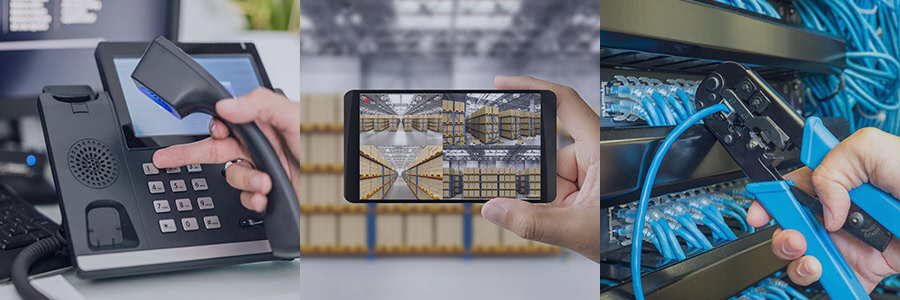The Hidden World of Emergency Communication

“911, please state your emergency.”
When you hear that introduction, the average person expects help in minutes. They feel instant relief when the call is answered quickly. They know help is on the way. What the average person doesn’t see is the thousands of cables, routers, switches and working hands behind the scenes to make those phone calls possible and keeping that lifeline open for public use.
I’ve spent years inside that invisible world. These lines are available to the public 24 hours a day, 365 days a year, no matter what. Keeping these lines accessible through any situation in this modern, digital world can be one of the most complex, and in my opinion, the least recognized responsibility in government technology. Yet, as we all know, each time that line is properly used, it can be a life changing event.
The Network Behind The Call
A 911 call not only connects you to a dispatcher, it connects a caller through many layers of local networks and statewide telecom routes from copper lines to cloud based servers. Each of these components are like finely tuned instruments, working together to play a huge role in connecting you to a skillful operator in a different location in just a matter of seconds.
In Indiana, these emergency communications span across hundreds of state agencies and different facilities. Each location has their own providers and compliance requirements.
Behind these emergency calls are heroes like the members of my telecommunication team. This team includes hard-working engineers, voice coordinators and informatics analysts who ensure that the State has a healthy network that is ready for any challenge or disaster.
When someone needs assistance in a dangerous situation, 911 operators are ready! Our job is considered to be mission critical because if one line fails in a critical event, it won’t be considered just a minor technical glitch. It can pose a devastating risk to someone’s safety. The average person isn’t aware of the high stakes at hand for these emergency services. Our team ensures that they don’t have to worry and that help is always just a phone call away.
Advancing Technology Into A Digital World

Over the last few decades, all the emergency lines across the State operated on analog copper connections. These simple connections worked well but physical wires that tie directly to the phone systems were becoming outdated. The system was reliable, but did it have the potential for flexibility? Not so much.
As the State of Indiana communication needs began to grow, telecommunication analysts became aware that it was time for change. We slowly began the transformative work to digital systems to accommodate the need for flexibility and better functionality. This would initiate the beginning of a much needed change to move the state into today’s digital world. This new system allows calls to route through the internet with higher speed and better resilience.
Not all changes are as simple as the flip of a switch. This change required high level project management skills to be deployed to guarantee minimal downtime. To accomplish this task, we had to work with multiple vendors, conduct 911 testing at various locations, ensuring power backups and verified every call path. Each migration to this new service involved be a combination of caution and innovation. When we migrate an emergency line, we not only move data, we are also moving an infrastructure of trust. Emergency services must work efficiently every time. One small mistake like mistyping an address can cause an emergency call to route to the wrong dispatch center. In an emergency, a mistake in routing could be fatal. This is why our team understands the importance of communication, accuracy, and patience. These are the primary tools required.
Redundancy: The Key to Success
Emergency systems are designed with one very important factor in mind: Redundancy. There is always a backup system in place for the backup. To put this idea into perspective, consider this case. If a network happens to suffer an outage, another network path automatically takes over. If power fails, backup generators or batteries is in place to keep those lines connected.
As we all know, technology alone doesn’t automatically promise safety. The people behind the systems work together with the technology to provide high quality trustworthy systems. We test, refresh and document every possible scenario to make sure that no outage can create a public emergency.
The Heroes Behind Telecommunication

The spotlight is on technology, but behind all these connections, there is a network of people, from project managers, field technicians, dispatch supervisors and vendors who work tirelessly to keep the lights on. Everyone on the team has a major role and collaboration is important. Our entire mission is to saves lives through reliability.
A Glimpse Into Indiana’s Telecommunication Future
As we continue to grow and modernize our services throughout the State of Indiana, new technologies will be introduced throughout the journey. These technologies will be smart, predictive, and cloud connected. Technologies like AI call monitoring and automatic failover systems will be developed and implemented to detect line issues before they arise.
Regardless of the growth of technology, the most important factor will always be the team that puts all this together to make it possible. These systems put in place, will always rely on professionals to ensure that everything is in place and operating as they should.
The fact is simple: telecommunication is important. The technology implemented and the coordination performed is complex. Newer cloud-based technologies are more reliable and faster than before. Here in the State of Indiana, we are prioritizing our resident’s safety by making sure that we use the best technology. Emergency service operations are one of the most critical tasks that the government manages. Maintaining lifelines of hope is a major part of keeping our residents safe. These 911 lines are not just a job for our teams; it is our commitment to providing the best services for our state.
